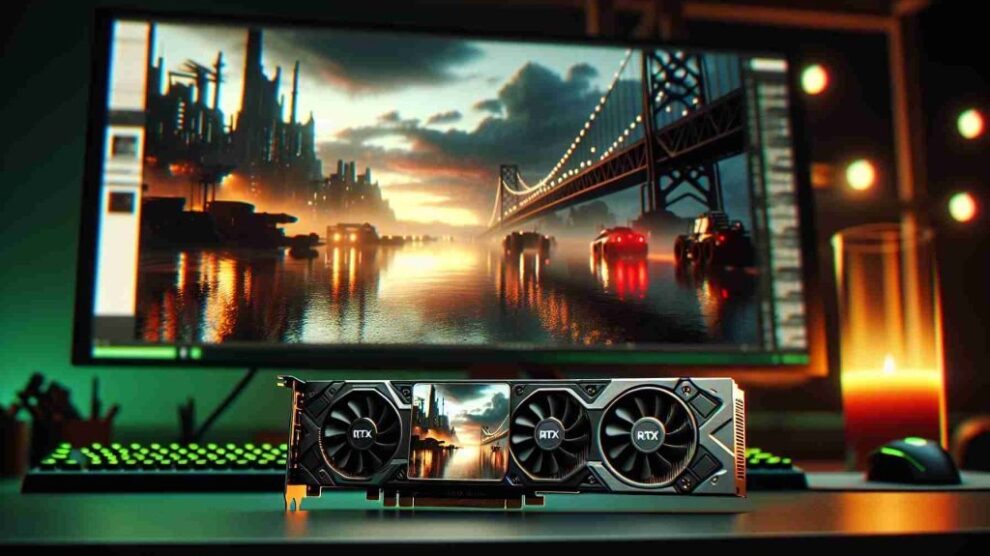PC gaming titan Nvidia recently introduced RTX Video HDR leveraging AI upscaling transforming standard dynamic range (SDR) video feeds into heightened high dynamic range (HDR) experiences supporting richer contrast and expanded color reproduction capabilities.
For compatible hardware owners, activating the feature enhances streamed, downloaded and directly played back non-HDR footage better showcasing modern display tech investments appreciably.
Today we explore implementation specifics, visible improvements manifested, ideal viewing preconditions qualifying and why AI adoption now proves essential ushering fully immersive digital entertainment fruition for both gaming and video contexts.
Leveraging AI to Expand Limited Color Information
At its core, RTX Video HDR taps deep learning inferencing to synthesize HDR footage absent rendering immense computational overhead required achieving equivalent results through brute-force alone.
Specifically, AI attempts predicting missing RGB and luminance data points conveying wider brightness ranges, color gamut coverage and bit depth clarity constituting key image pillars differentiating SDR and HDR dynamics fundamentally.
This means creatively inventing reasonable video signal approximations seeming natural given content conditions and machine learning dataset exposures training Scene analysis modeling accordingly.
Filling the Gap Between Content Capabilities
In essence Nvidia technology strives filling the gap between lower capability video sources and higher fidelity display potentials intelligently.
Rather than downgrade output quality squandering expensive monitor capabilities available, AI intervenes maximizing clearer, more vibrant and punchier images reasonably within constrained SDR boundaries.
Think optical illusions for your pixels rendered benefitting screens rather than traditional opposite dynamics compromising panels, ruining artistic intentions.
Not All Footage Shines Equally Afterwards
Admittedly, RTX Video HDR proves hit-or-miss depending originating video condition integrity itself.
Clean, high bitrate sources transform marvelously while artifact-ridden streams struggle conveying enough discernible detail fully optimizing machine learning ambition.
We found pristine Blu-Ray rips and high-quality YouTube uploads rewarding best, while grainy webcam streams strain despite technically functioning underneath.
When It Clicks, Wow Factor Wows!
But wow-factor merits highlighting when conditions align tastily. Namely colors sometimes burst brighter than expectations originally held for non-HDR footage counterintuitively.
And dark room shadow details emerge surprisingly clear nearly cheating senses except tell-tale HDR metadata confirms feeds stay SDR sources technically.
At its best, RTX Video HDR surprises eyes conveying information screens seemingly incapable previously but now somehow manifest thanks to intelligently guided extrapolation powered computationally.
Gaming Also Gets AI Upscaling Gains
Beyond videos itself, Nvidia’s new AI expansion also boosts traditional gaming visuals through separate Super Resolution features nearly doubling supported rendering resolutions functionally for select titles.
By integrating trained neural networks directly into GPU drivers, RTX cards render games at reduced base resolutions better optimizing in-game performance budgets.
Then dedicated tensor processing cores handle targeted upscaling stitching and blending pixels upwards reconstructions matching higher target outputs incredibly.
Performance, Precision and Picture Quality Together
This gives gamers best both worlds – speed, precision and visual quality simultaneously despite vastly lighter rendering workloads handled traditionally.
So not only videos get smarter sampling signaling, games render smarter balancing user priorities across combined vectors complexly benefiting individuals specifically.
That personalized optimization philosophy rewards Nvidia continued gaming technology leadership going forward we believe.
Compatibility and Implementation Details
Given significant AI processing demands involved, RTX Video HDR requires latest GeForce RTX graphics cards like RTX 3060 or RTX 4080 managing neural network loads accordingly.
Users then enable modes through Nvidia Control Panel selecting applicable video playback sources benefitting upgrades.
HDR-ready displays like LG OLED TVs also qualify fully revealing enhanced contrast depth and color volumes conveying encoded HDR data downstream.
Alternatively, consider pairing RTX cards with advanced monitor tech like Mini-LED backlights producing screen outputs best replicating intended cinematic visions emerging through calculated upscaling pipelines.
The Cutting Edge Still Marching Forward
As machine learning research continually advances unlocking smarter inference efficiencies, expect video upscaling flourishing bringing SDR footage closer true HDR calibers over time.
Nvidia RTX Video HDR provides exciting glimpses realizing this manifest destiny democratizing home theater experiences positively.
That makes competitively priced AI graphics hardware rather than just displays themselves gatekeepers entering new entertainment eras onwards.










Add Comment